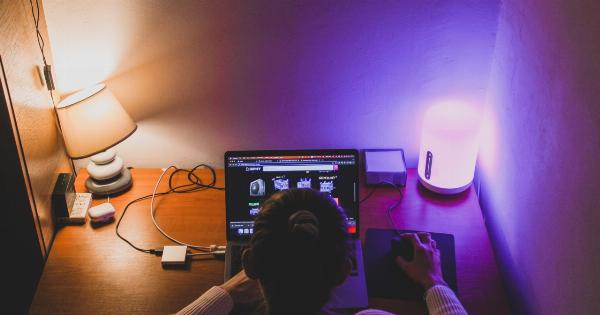In today’s digital age, the internet has become an integral part of our lives. We rely on it for communication, information, entertainment, and more.
While the internet has undoubtedly revolutionized our world, it also presents the risk of excessive use or addiction. Internet Use Disorder, also known as internet addiction, is a condition that affects many individuals worldwide.
In this article, we will explore the concept of Internet Use Disorder, its symptoms, potential consequences, and strategies for managing internet use.
Understanding Internet Use Disorder
Internet Use Disorder refers to the problematic and uncontrolled use of the internet, leading to negative consequences in various aspects of an individual’s life.
It is characterized by excessive time spent on online activities, such as social media, gaming, shopping, or browsing, to the point where it interferes with daily functioning and well-being.
There are several symptoms associated with Internet Use Disorder:.
1. Loss of Control
Individuals with Internet Use Disorder often find it challenging to control or limit their internet usage. They may spend more time online than intended and have unsuccessful attempts to cut back on internet use.
2. Preoccupation
A person suffering from Internet Use Disorder may constantly think about being online, even when engaged in other activities. They might eagerly anticipate their next online session or feel restless when unable to access the internet.
3. Neglecting Responsibilities
Individuals with Internet Use Disorder may neglect their personal responsibilities, such as work, relationships, or academic obligations, in favor of spending time online.
This neglect can lead to adverse consequences in their professional and personal lives.
4. Withdrawal Symptoms
When the internet is unavailable or inaccessible, individuals with Internet Use Disorder may experience symptoms of withdrawal similar to those seen in substance or behavioral addiction.
These symptoms can include irritability, restlessness, mood swings, and even physical discomfort.
5. Escapism
Internet Use Disorder often involves using the internet as a means of escaping reality or avoiding negative emotions. It becomes a coping mechanism to deal with stress, anxiety, loneliness, or boredom.
6. Interpersonal Problems
Excessive internet use can strain personal relationships and lead to social isolation. Individuals may prefer online interactions over face-to-face interactions, resulting in a decline in real-world social connections.
7. Concealing and Lying
People with Internet Use Disorder may attempt to hide or downplay their internet use from family, friends, or peers. They may lie about the amount of time spent online or make excuses to justify their behavior.
8. Impacts on Physical and Mental Health
Internet Use Disorder can have detrimental effects on an individual’s physical and mental well-being.
Excessive internet use can contribute to sedentary behavior, disrupted sleep patterns, eye strain, musculoskeletal problems, and increased stress levels. It may also exacerbate symptoms of anxiety and depression.
Consequences of Internet Use Disorder
Internet Use Disorder can significantly impact various aspects of an individual’s life. Here are some potential consequences associated with this condition:.
1. Academic or Work Performance
Spending excessive time on the internet can result in a decline in academic or work performance. Distractions, decreased focus, and reduced productivity can hinder an individual’s ability to fulfill their responsibilities and achieve their goals.
2. Relationship Difficulties
Excessive internet use can strain relationships, both romantic and familial. Neglecting personal connections, prioritizing online interactions, and disengaging from real-world interactions can lead to increased conflicts and feelings of isolation.
3. Mental Health Concerns
Internet Use Disorder is often associated with mental health conditions such as anxiety and depression. Excessive internet use can worsen existing symptoms or trigger new mental health challenges.
It can contribute to feelings of loneliness, low self-esteem, and social anxiety.
Graphing Your Internet Use Habits
Graphing your internet use habits can provide valuable insights into your online behavior and help determine if you have Internet Use Disorder. Here’s how you can graph your habits:.
1. Document your internet use
Start by keeping a record of the time you spend online each day. Note the specific activities you engage in, such as social media browsing, online gaming, or watching videos. Be honest and thorough in documenting your internet usage.
2. Set goals and limits
Based on your current internet use, set realistic goals and limits for yourself. Determine the maximum amount of time you would like to spend online each day and allocate specific time periods for different activities.
3. Track your progress
Continuously track your internet use and compare it to your set goals and limits. Use a graph or a digital tool to visualize your internet habits over a specific period, such as a week or a month.
This will enable you to identify patterns and understand your behavior better.
4. Reflect on the results
Reflect on the data from your graph.
Do you notice any excessive internet use patterns? Are there specific triggers or situations that lead to prolonged online sessions? Take note of any potential signs of Internet Use Disorder that may be revealed through the graphing process.
Managing Internet Use
If you suspect that you have Internet Use Disorder, or if your graphing indicates problematic internet usage, there are strategies you can implement to manage your internet use more effectively:.
1. Set boundaries
Establish clear boundaries for your internet use. Determine specific times of the day when you will allow yourself to be online and when you will disconnect.
Consider using mobile apps or browser extensions that can help you set time limits and block access during designated periods.
2. Find alternative activities
Engage in alternative activities that do not involve the internet. Explore new hobbies, spend time outdoors, exercise, read books, or meet friends face-to-face.
By diversifying your activities, you can reduce dependence on online interactions and find fulfillment elsewhere.
3. Practice self-care
Ensure you prioritize self-care activities that contribute to your well-being. This may include getting enough sleep, eating a balanced diet, exercising regularly, and maintaining healthy relationships.
Taking care of your physical and mental health can reduce the urge to turn to excessive internet use as a coping mechanism.
4. Seek support
If you are struggling to manage your internet use, consider seeking support from professionals or support groups specializing in internet addiction.
They can provide guidance, resources, and a supportive community to help you overcome Internet Use Disorder.
Conclusion
The internet undoubtedly offers numerous advantages and enriches our lives in many ways. However, it is essential to be mindful of our internet use and evaluate whether it has crossed the line into Internet Use Disorder.
By graphing our habits and being aware of the symptoms, consequences, and strategies for managing internet use, we can maintain a healthy relationship with the digital world while prioritizing our well-being.






























